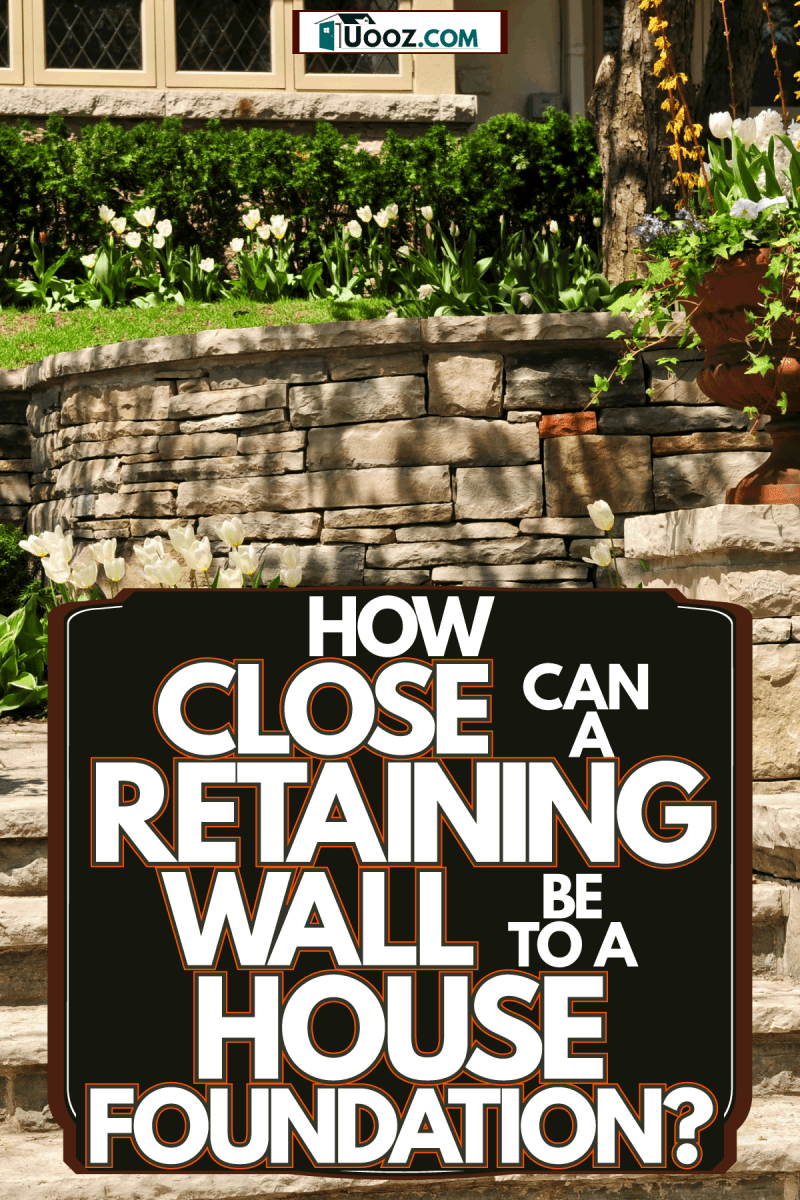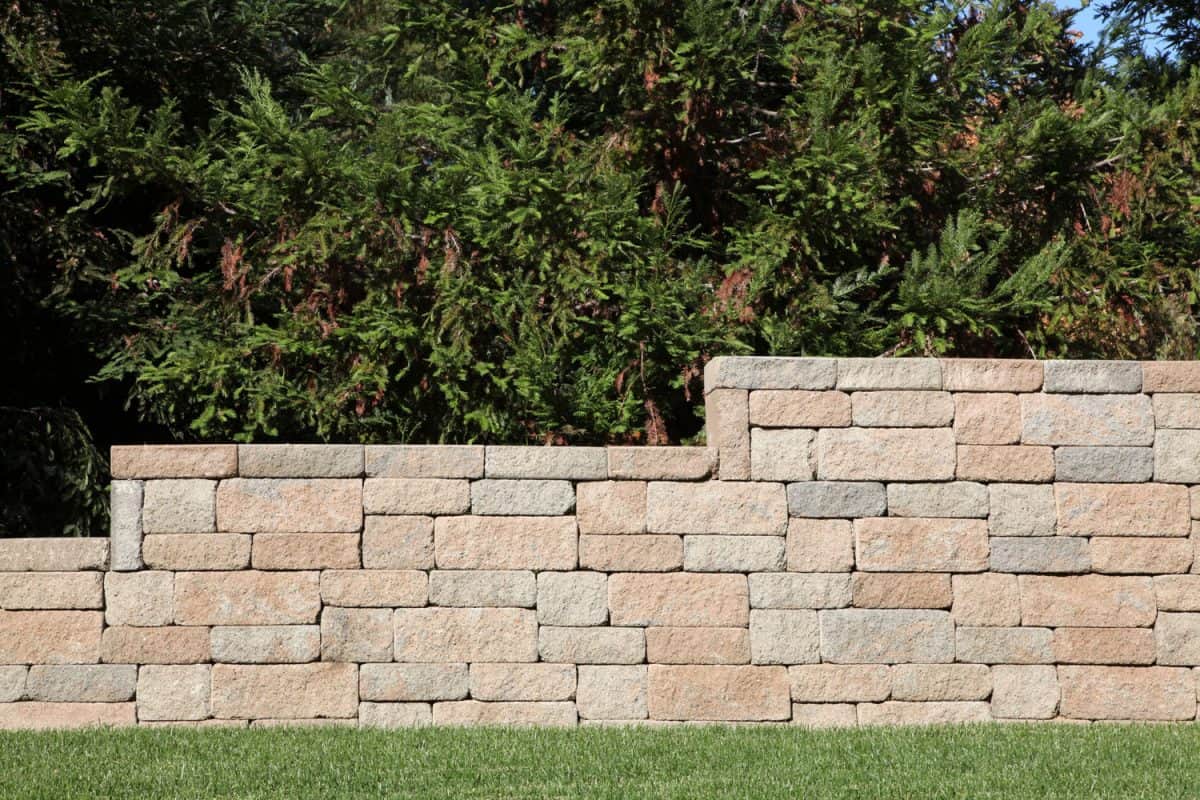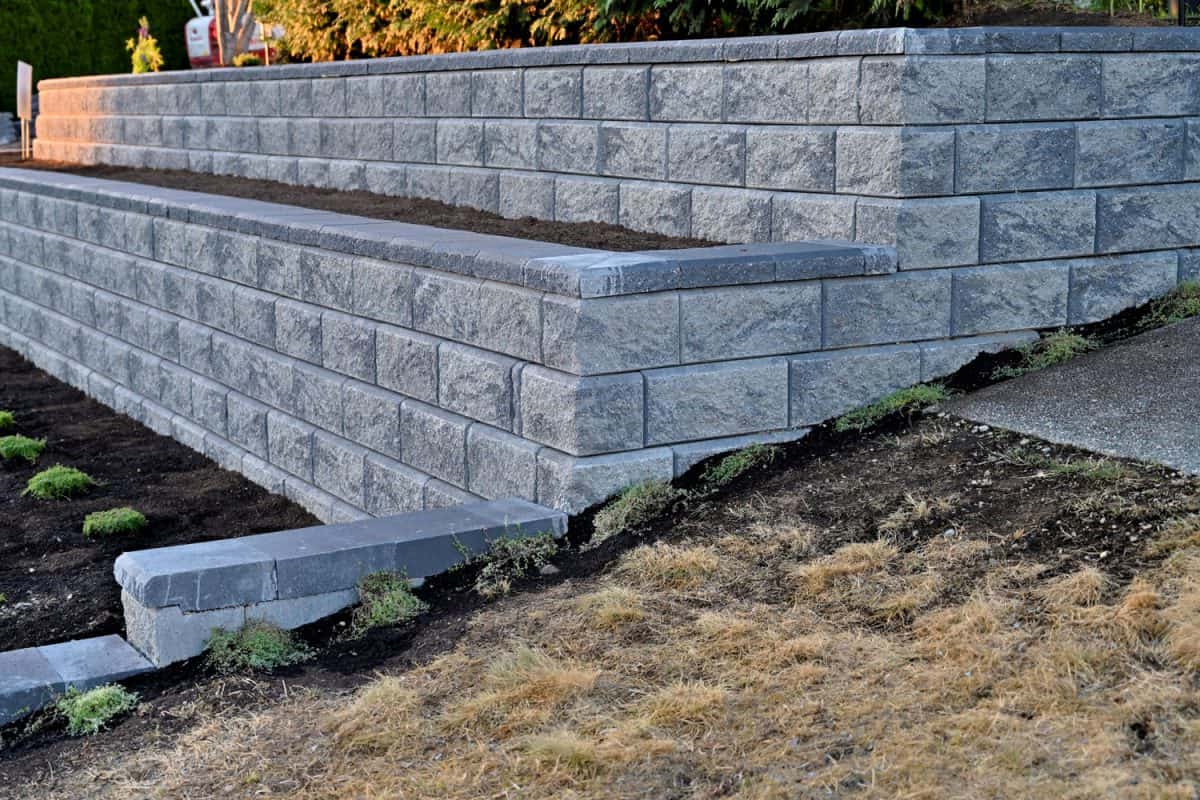If you're planning to have a retaining wall constructed on your property, it is best to know how far it should be from your house foundation. We've done the research for you and here's what experts have to say.
A retaining wall should be at least 3 feet away from your house foundation. This will promote better drainage and provide you with adequate space inside your property to do your maintenance and repairs. It will also expand the usable space within your home.
Continue reading so we can tell you more about the recommended distance of retaining walls from a house foundation. We'll also share with you if your wall needs a foundation, what base material is best to use, and how long these walls are expected to last.

Can a retaining wall be part of a house?
A retaining wall is built to prevent erosion. This wall is a separate structure that's built on a property that sits on sloped terrain. It is supposed to withstand lateral pressure coming from soil and water. In effect, it protects the property from destruction.
This means that a retaining wall is not a part of your house but it is a part of your property. As far as the distance between the retaining wall and your house foundation is concerned, the general rule seems to be that the further away it is, the better. A geotechnical expert said that the setback could be anywhere between 3' and 15'. This will depend on the building codes in a given area.
Adequate distance is necessary to allow proper drainage. You'd want to drain rainwater away from your house. You also need to have enough space for your home maintenance and repairs. It's best if a tractor or truck can fit in there in case you'd need these services.
When your retaining wall is also a considerable distance away from your house foundation, you have more usable space within your property. Your family can enjoy using this level ground for various activities.
What slope requires a retaining wall?

Not all homes require a retaining wall. This structure is meant to hold back the soil and water to keep them from destroying your property. It makes a fierce stand against gravity to ensure that your property is safe and protected.
Having said that, retaining walls are needed when homes are located in an inclined or sloped area. When the terrain is downhill, gravity dictates that everything on the top will make its way down. It is only a matter of time. And when you have property along the slope, that could mean disaster for you.
But then again, lying on the sloped ground does not immediately entail that a retaining wall is in order. When the slope of the soil is 35 degrees or shallower, your property is safe even without this barrier.
When the slope of the soil is above 35 degrees, that's the time that you would need to consult a professional to have a retaining wall constructed around your property. This is first and foremost for your safety.
Take note also that this is one of those home projects that are best entrusted to professionals. They have the proper knowledge and skills to make a durable retaining wall.
Do you need a foundation for a retaining wall?
Your retaining wall needs a firm foundation for it to last long. This is also called the base or footing of your retaining wall. This is where the rest of your wall is built upon.
When you have a solid foundation, your wall will not sag and it'll remain level with the ground. It can bear the weight of the wall and withstand the pressure of external forces.
The wall's base is under the ground. The general rule for a solid base is that it should be buried below ground level with a depth of around 1/8 of the height of your wall. The taller your retaining wall is, the deeper the base should be.
Let's say you're building a 3 ft retaining wall. Your first set of blocks should start about 5 inches below the ground. And the base is 4 to 6 inches before this. So the base for your wall starts at 9 to 11 inches underground for you to have a strong base. Please note that retaining walls with a height of 4 ft and above require engineering.
What is the best base for a retaining wall?

The base of a retaining wall is very crucial. It can make or break the wall so to speak. That's why when building a retaining wall, you have to think about a suitable material to help it do its job effectively. It should have the capacity to bear the load and perform well against various stress parameters.
The base should be made of gravel or crushed stone. They must be sharp-edged or angular so that they can be easily compacted. Their size should be around 1/2 to 3/4 inches.
Round stones tend to roll and will be dislodged when pressure is applied to them. Because they don't have angled edges, they won't be able to interlock and form a bond. This is dangerous to use for your base. It'll just cause a lot of problems as time passes by.
Meanwhile, crushed gravel can be compressed to provide a firm foundation for your retaining wall. They also help drain water more efficiently. You don't want to use materials that absorb water. They can soak up your base and cause your retaining wall to fail.
Fill the trench with 4 to 6 inches of this crushed material. Make sure that they are properly compacted and leveled so they won't shift as you continue to add up other materials to your wall.'
How long do retaining walls last?
Retaining walls are built to last. You can expect them to have a lifespan of between 20 to 100 years. Some even last beyond that time. But of course, their longevity would depend on various factors such as the type of materials used, design and construction, proper maintenance, and environmental conditions.
Materials
A retaining wall that's made of concrete or masonry will last longer than one that's made of timber. Concrete blocks are considered one of the strongest building materials in the market. On the other hand, wood makes for great aesthetics but it absorbs moisture and is prone to damages from termites and other insects which can compromise its durability.
Design and Construction
Needless to say, a poorly designed retaining wall will cause you a major headache in the long run. It may look good after its construction but it is bound to fail prematurely.
For example, your retaining wall should have an efficient drainage system. If water builds up, it'll cause hydrostatic pressure upon the wall and cause it to bulge or crack in a short time.
Maintenance
Don't worry. Retaining walls do not require frequent maintenance and upkeep. You just need to observe and inspect if it is still doing its job properly.
Check if there are physical damages on the wall (especially after a major storm or earthquake) or obstructions in the weep holes. You should also be able to notice if the groundwater is draining properly. When you spot these signs, you can reach out to your contractor to see if they can have them fixed or inquire what you can do about them.
There are contractors that offer to provide a yearly inspection of your retaining wall. They will see to it that the wall is in great condition and if there are any issues, they can attend to them right away.
Environmental Conditions
Some places are more prone to harsh weather conditions such as strong winds and rains. As such, their retaining walls face a lot more pressure than those areas blessed with fair weather for a good portion of the year. A strong earthquake can also damage a retaining wall which in turn, affects its durability and longevity.
When you notice that your retaining wall is leaning, bulging, or has cracks, it's time to call a professional to have it inspected and repaired. They can help stabilize your wall and put it back in order.
Repair costs can range from $800 to $1,000 but this is money well spent considering that you're investing for your family's safety and other people and structures near your home.
Final Thoughts
The farther away your retaining wall is from your house foundation, the better. Of course, that is if you have enough space within your property. Aside from having proper drainage, you can also enjoy all the conveniences that come with it such as more room for your family activities and space for the upkeep of your property.
For some reading regarding house foundations, you may visit the following links:
How Deep Are House Foundations?
How To Take Care Of Your House Foundation [A Complete Guide]
